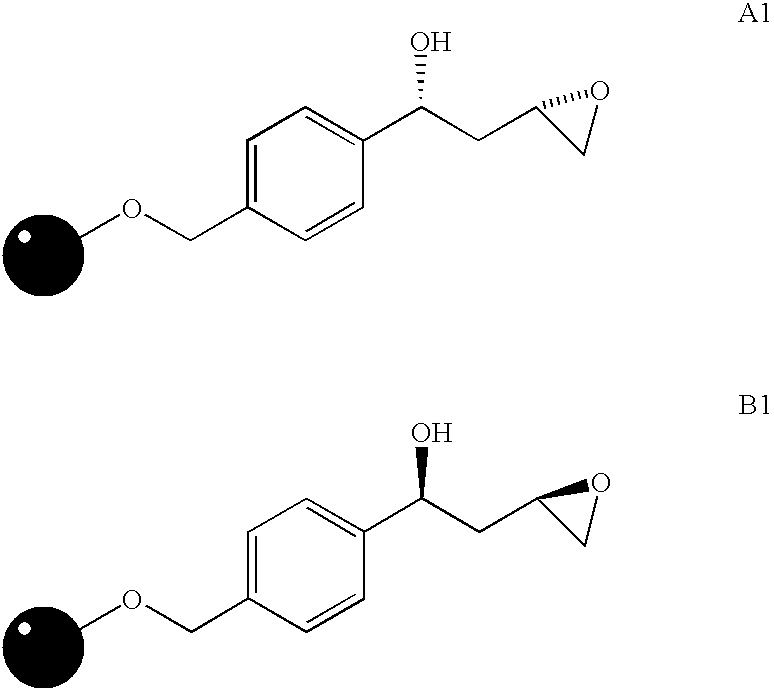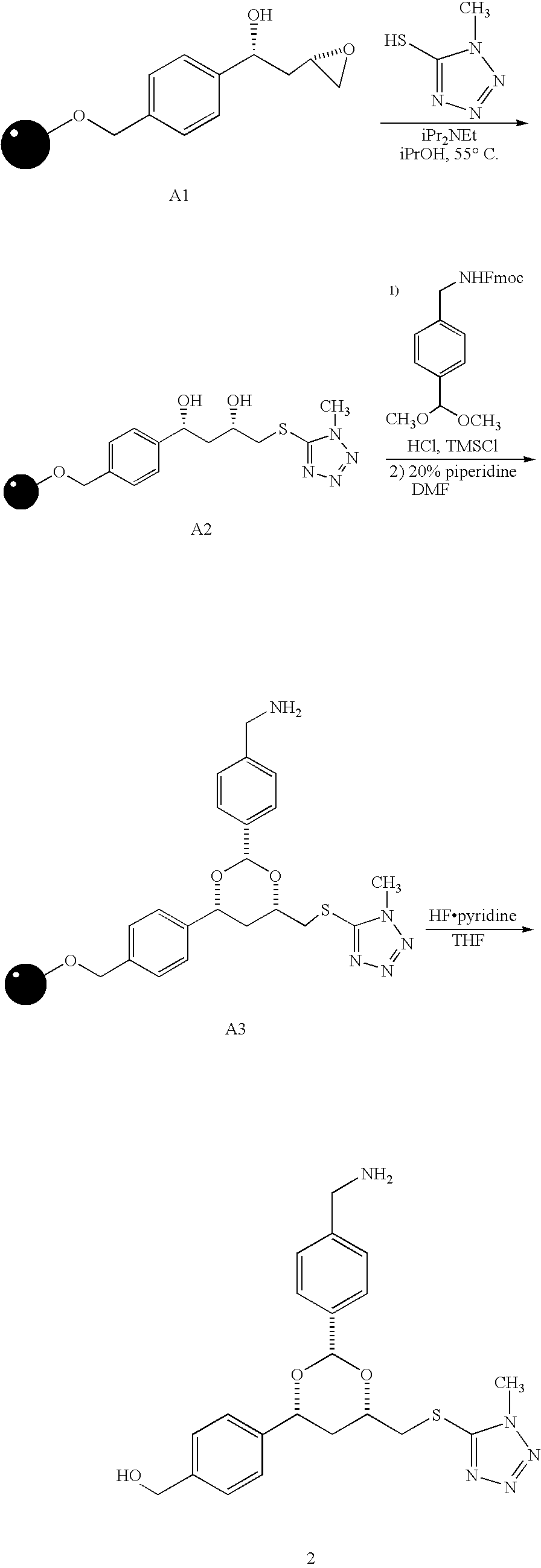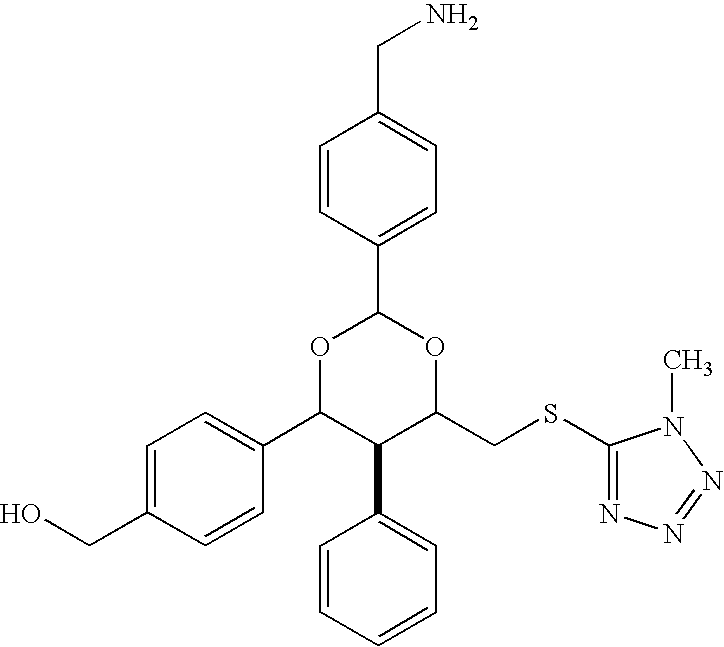Human papillomavirus inhibitors
a human papillomavirus and inhibitor technology, applied in the field of human papillomavirus inhibitors, can solve the problems of low efficacy of podophyllotoxin or interferon, high recurrence rate, and ineffective antiviral therapy,
- Summary
- Abstract
- Description
- Claims
- Application Information
AI Technical Summary
Benefits of technology
Problems solved by technology
Method used
Image
Examples
example 1
E2 Binding Screening Assay
[0125] An assay for the identification of E2 ligands was used to screen a 1,3-Dioxane small molecule library which was developed in the Applicants' laboratory and whose synthesis has previously been described in great detail (S. M. Sternson et al., J. Am. Chem. Soc. 2001, 123: 1740-1747, which is incorporated herein by reference in its entirety). The assay was performed according to a method developed in the Applicants' laboratory (G. MacBeath et al., J. Am. Chem. Soc. 1999, 121: 7967-7968, which is incorporated herein by reference in its entirety).
[0126] Two 23-mer HPV-16 E2 peptides (corresponding to amino acids 28-50 of the full-length native HPV-16 E2 protein) were used in the screen. The amino acid sequence of the interacting peptide is: A-H-I-D-Y-W-K-H-M-R-L-E-C-A-I-Y-Y-K-A-R-E-M-G, and the amino acid sequence of the specificity peptide, which contains an alanine substitution for glutamic acid at position 39 (E39A), is: A-H-I-D-Y-W-K-H-M-R-L-A-C-A-I...
example 2
Synthesis of Compounds 2 and 3
[0129] Compounds 2 and 3 were synthesized with the goal of developing molecules with improved solubility properties compared with compound 1.
[0130] Resin Starting Materials. The syntheses of compounds 2 and 3 were carried out by solid phase organic chemistry using two different resins (resins A1 and B1) as starting materials. The chemical structures of resins A1 and B1 are presented below. Detailed synthetic procedures for the preparation of these resins have been described (S. M. Sternson et al., Org. Let., 2001, 3: 4239-4242, which is incorporated herein by reference in its entirety).
[0131] Procedure. The synthesis of compound 2 is illustrated by the scheme presented below.
[0132] To resin A1 (20 mg) in a 4 mL-Wheaton vial was added 5-mercapto-1-methyltetrazole (35 mg, 0.30 mmol) followed by isopropanol (0.3 mL) and diisopropylethylamine (0.051 mL, 0.30 mmol). The vial was flushed with argon, capped, and allowed to stand in an oven at 55° C. for ...
example 3
Determination of Dissociation Constants by Surface Plasmon Resonance
[0136] Surface Plasmon Resonance Instrument. Surface plasmon resonance experiments were performed with a Biacore® 3000 Biosensor (Biacore AB, Uppsala, Sweden). To keep the instrument in good working condition, a series of washing steps were performed on a weekly basis. In addition to the prescribed maintenance washes, the fluidic system was primed three times in a row with the following reagents: 0.5% (w / v) SDS, 6 M urea, 1% (v / v) acetic acid, and 0.2 M NaHCO3. When not in use, a standby program injects water at a flow rate of 5 μL / minute to prevent salt build-up in the lines or integrated fluidic cartridge. Whenever running buffer was changed, the system was primed three times in order to equilibrate the sensor chip and the instrument.
[0137] Immobilization of anti-GST Antibody. A CM5 sensor chip was docked and the system was primed three times with filtered and degassed PBST containing 5% (v / v) DMF. Affinity puri...
PUM
| Property | Measurement | Unit |
|---|---|---|
| molecular weight | aaaaa | aaaaa |
| emission wavelengths | aaaaa | aaaaa |
| emission wavelengths | aaaaa | aaaaa |
Abstract
Description
Claims
Application Information
 Login to View More
Login to View More - R&D
- Intellectual Property
- Life Sciences
- Materials
- Tech Scout
- Unparalleled Data Quality
- Higher Quality Content
- 60% Fewer Hallucinations
Browse by: Latest US Patents, China's latest patents, Technical Efficacy Thesaurus, Application Domain, Technology Topic, Popular Technical Reports.
© 2025 PatSnap. All rights reserved.Legal|Privacy policy|Modern Slavery Act Transparency Statement|Sitemap|About US| Contact US: help@patsnap.com



